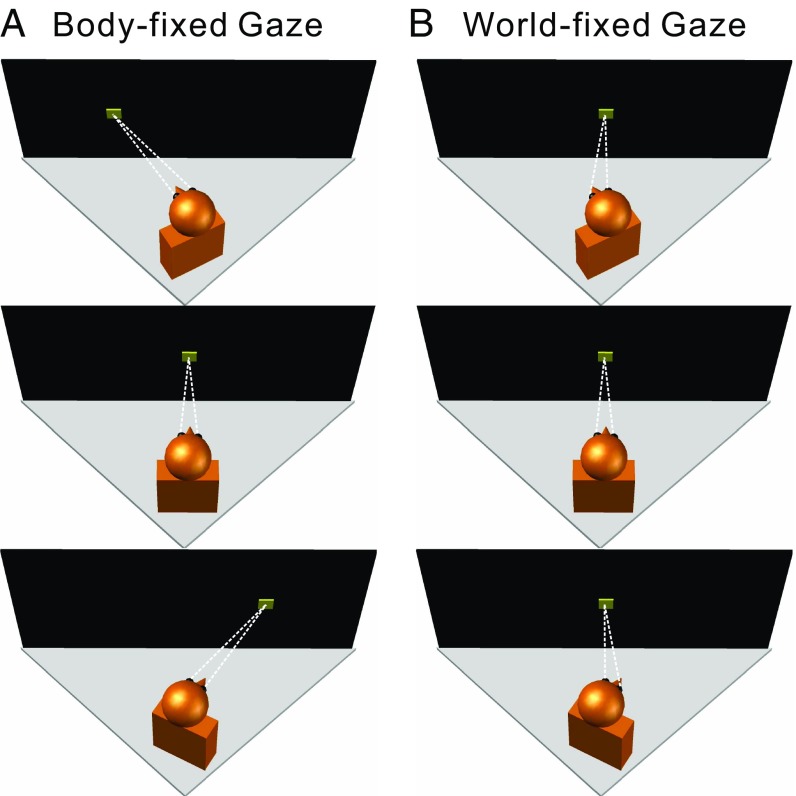Fig. 1.
Experimental design. Schematic illustration of the various combinations of body/eye orientations relative to the motion platform (gray triangles) and display screen (black rectangle). The monkey’s head/body orientation was varied relative to the motion platform and screen (Top, 20° left; Middle, straight ahead, 0°; Bottom, 20° right) by using a yaw rotator that was mounted on top of the motion platform, below the monkey. The monkey’s head was fixed relative to the body, but the eye-in-head position could be manipulated by fixating one of three targets (yellow squares) on the screen. (A) In the body-fixed gaze condition, the monkey fixated a visual target that was at a fixed location (straight ahead) relative to the head/body, such that eye-in-head position was constant. (B) In the world-fixed gaze condition, the animal was required to maintain fixation on a world-fixed target, such that eye-in-head position covaried with head/body orientation.

